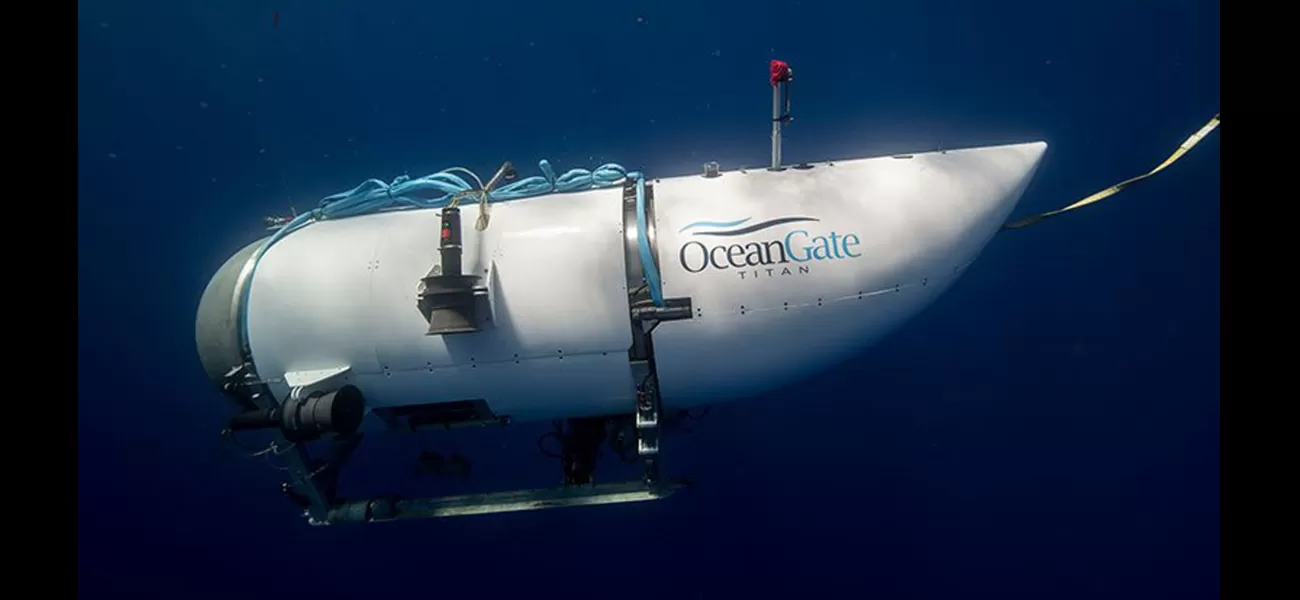New research shows possible cause of Titan submarine's catastrophic collapse
The Titan's hull was made of a carbon fiber composite material.
May 4th 2024.

Last year, there was a shocking event that captured the world's attention. A group of people were on a journey to explore the depths of the North Atlantic Ocean, hoping to see the famous Titanic wreck at a depth of 12,500 feet. Unfortunately, their submarine, named Titan, imploded and all five people on board lost their lives. Among the victims were a British billionaire, a French diver, a Pakistani businessman and his son, and the CEO of OceanGate. It was a tragic and devastating event that left many wondering what could have caused such a catastrophic failure.
Recently, new research has shed light on a possible reason for the submarine's collapse. A team of researchers from the University of Houston published a paper in the journal Proceedings of the National Academy of Sciences, suggesting that the Titan may have been doomed due to "micro-buckling" of its hull. This means that tiny imperfections in the submarine's material could have contributed to its collapse. The lead researcher, Roberto Ballarini, explained that the carbon fiber composite material used for the Titan's hull is vulnerable to damage and delamination under extreme pressure.
Computer simulations also supported this theory, adding more weight to the possibility of "micro-buckling" being the cause of the disaster. Debris from the submarine was found near the Titanic wreck, just five days after their journey began. It is believed that the collapse would have happened in a matter of seconds, leaving the passengers with little time to react.
According to underwater archaeologist Dr E Lee Spence, the passengers may have had some warning before the submarine's collapse. The shape of the vessel would have started to distort, and there may have been cracks or leaks before the critical implosion. However, once the water rushed in with extreme pressure, there would have been little chance of survival.
Submarine expert José Luis Martín added that the passengers may have been aware of their impending fate for around a minute before their death. The change in pressure would have caused the sub to freefall for 71 seconds before the implosion and sudden death. Many haunting animations and videos have been shared on social media, attempting to explain and visualize what may have happened during the tragedy.
It's a heartbreaking reminder of the dangers and risks involved in exploring the depths of the ocean. The Titan submarine may have been strong and sturdy, but it was no match for the immense pressure of the ocean's depths. As we continue to push the boundaries of underwater exploration, it's important to remember and honor those who have lost their lives in pursuit of discovery.
Recently, new research has shed light on a possible reason for the submarine's collapse. A team of researchers from the University of Houston published a paper in the journal Proceedings of the National Academy of Sciences, suggesting that the Titan may have been doomed due to "micro-buckling" of its hull. This means that tiny imperfections in the submarine's material could have contributed to its collapse. The lead researcher, Roberto Ballarini, explained that the carbon fiber composite material used for the Titan's hull is vulnerable to damage and delamination under extreme pressure.
Computer simulations also supported this theory, adding more weight to the possibility of "micro-buckling" being the cause of the disaster. Debris from the submarine was found near the Titanic wreck, just five days after their journey began. It is believed that the collapse would have happened in a matter of seconds, leaving the passengers with little time to react.
According to underwater archaeologist Dr E Lee Spence, the passengers may have had some warning before the submarine's collapse. The shape of the vessel would have started to distort, and there may have been cracks or leaks before the critical implosion. However, once the water rushed in with extreme pressure, there would have been little chance of survival.
Submarine expert José Luis Martín added that the passengers may have been aware of their impending fate for around a minute before their death. The change in pressure would have caused the sub to freefall for 71 seconds before the implosion and sudden death. Many haunting animations and videos have been shared on social media, attempting to explain and visualize what may have happened during the tragedy.
It's a heartbreaking reminder of the dangers and risks involved in exploring the depths of the ocean. The Titan submarine may have been strong and sturdy, but it was no match for the immense pressure of the ocean's depths. As we continue to push the boundaries of underwater exploration, it's important to remember and honor those who have lost their lives in pursuit of discovery.
[This article has been trending online recently and has been generated with AI. Your feed is customized.]
[Generative AI is experimental.]
0
0
Submit Comment





